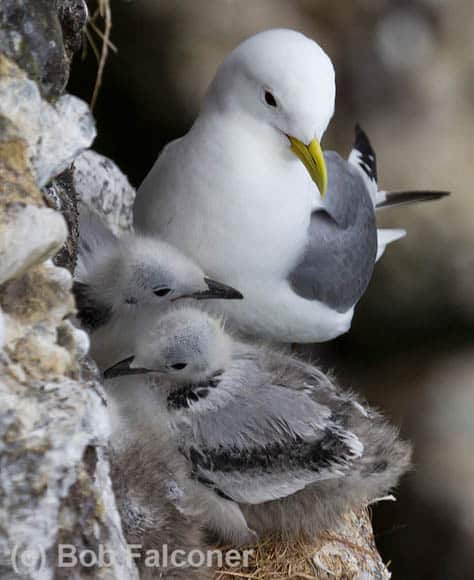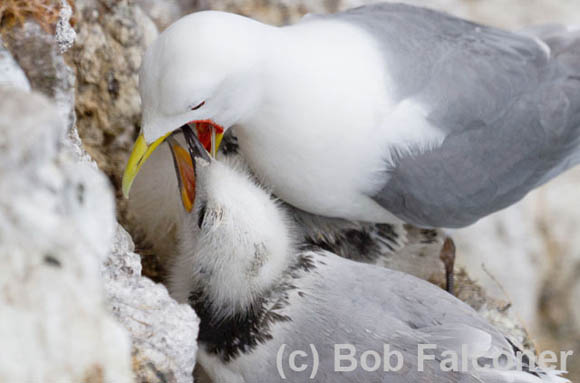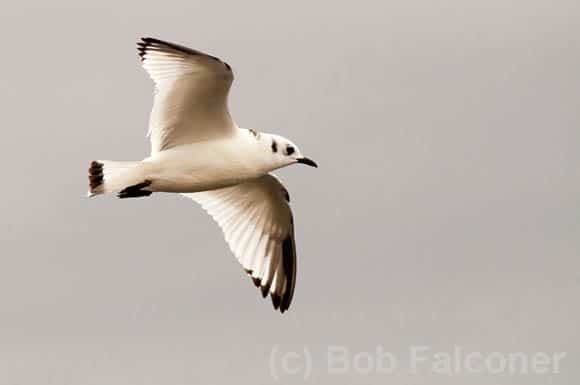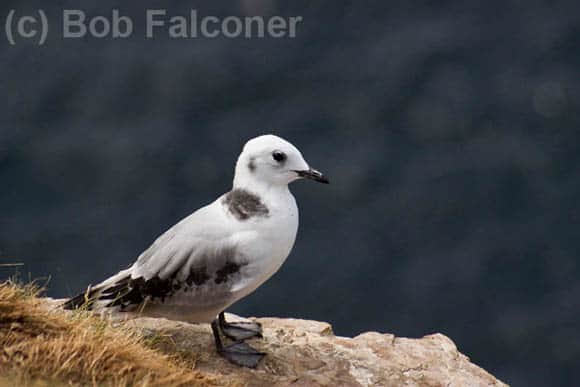The last 30 years have witnessed a dramatic decline in the Kittiwake population around Scottish coasts (RSPB figures), numbers dropping by almost 2/3. However, this trend seems to have turned this year, particularily in the colonies of Troup Head and Fowlsheugh in the North East.
Kittiwakes (Rissa tridactyla) are one of the nicest looking gulls, not at all like the belligerent herring gull although they can be just as noisy.
In Victorian times the birds were collected and the wings used as decoration on ladies hats. The eggs were also harvested by collectors. Happily this practice has now been consigned to the annuls of history.
Kittiwakes nest on cliff ledges keeping them safe from predators, although I have witnessed a Kestrel hunting along the cliff tops, dropping down to pick off an unsuspecting one. They lay a clutch of 2 eggs which are incubated for around 28 days by both parents, the chicks fledging 7 or 8 weeks later.
The young are fed on small balls of regurgitated fish, mostly caught on the surface or just below it. The Kittiwake is the only gull that dives and can swim underwater.
Juvenile Kittiwakes have a characteristic zig-zag pattern on the wings.
Bob Falconer
Bob has been a keen photographer since the age of 11 or 12 and with an added interest in wildlife, it was not long before the two were combined. Being based in Aberdeen, Scotland is a great opportunity to photograph the rich and diverse range of seabirds around the coast and the many migratory species which pass through. Not so far in the other direction is the Scottish highlands, renowned for its wild rugged landscapes and home to many iconic birds and mammals.







Leave a Reply